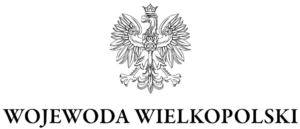10.08.2020 – Cultural differences: trust and distrust
Cultures can also be divided horizontally into the following:
- high-trust cultures: in the institutions of the state and its citizens towards each other and
- low-trust cultures.
Cultures are also differentiated by the trust that individuals place in them. In cultures with a high level of trust people will trust themselves and institutions. In societies with a low level of trust, the organisation of social life is based on kinship and people rely primarily on their family.

Depending on the level of trust in a given culture, the attitude to e.g. verbal arrangements is different. An important aspect of social life is also the trust that individuals have in themselves. Trust can be understood in different ways. It may, for example, result from the assumption that members of a given community are characterised by honest behaviour based on shared norms.
In low-trust cultures, a contract is required to be written down and often with additional witnesses.

Trust cultures
In high-trust cultures, an oral contract is binding, does not have to be written down, it is as valid as a contract written down or confirmed by an official.
In such societies, people are more likely to trust themselves and their institutions, as trust is the commonly accepted social norms. In high-trust cultures societies, organisations, businesses and institutions located between the family and the state play an important role in social, political and economic life. In this type of society, individuals work together outside the family and state institutions. Individuals brought up in such societies rely not only on the family, but above all on other groups and institutions: friends and acquaintances, neighbours, non-governmental organisations, religious associations. If necessary, people can and do organise themselves.
Countries with a high level of trust include the Scandinavian countries.
Distrust cultures
In low-trust cultures, a contract is required and often witnesses are still required. In practice, this aspect is important in dealing with people from different cultural backgrounds, as a person from a culture of low trust may not take seriously, e.g. what a clerk says or orally requests from the employer. For this reason, for example, people from a culture of low-trust should be informed in writing.
In low-trust societies, the organisation of social life is based on kinship or is initiated by the state. There is a conviction that one can rely mainly on the family, it is the family that is the main support, source of information, organiser of leisure activities.
Low-trust societies include the countries of Central and Eastern Europe.
Bibliography for a series of articles on cultural differences:
„Cudzoziemcy w Polsce. Podręcznik dla osób pracujących z imigrantami”, red. M. Budyta-Budzyńska, Caritas Polska, Warszawa 2020
Skrypt na szkolenie „Praca z klientem cudzoziemskim”, A. Kosowicz, Caritas Polska, Warszawa 2020
„Cudzoziemcy w Polsce. Podręcznik dla osób pracujących z imigrantami”, red. M. Nowicka, Warszawa, Caritas Polska, Warszawa 2020
„Międzykulturowość w szkole, Poradnik dla nauczycieli i specjalistów”, Red. Kinga Białek, Ośrodek Rozwoju Edukacji, Warszawa 2015
„Kultury i organizacje”, G. Hofstede, G. J Hofstede, M. Minkov, Polskie Wydawnictwo Ekonomiczne, Warszawa 2011
Encyklopedia Zarządzania: https://mfiles.pl
https://mfiles.pl/pl/index.php/R%C3%B3%C5%BCnice_kulturowe
https://mfiles.pl/pl/index.php/Badanie_Geerta_Hofstede
https://www.helixpoland.com.pl/roznice-kulturowe-wg-geerta-hofstede/




